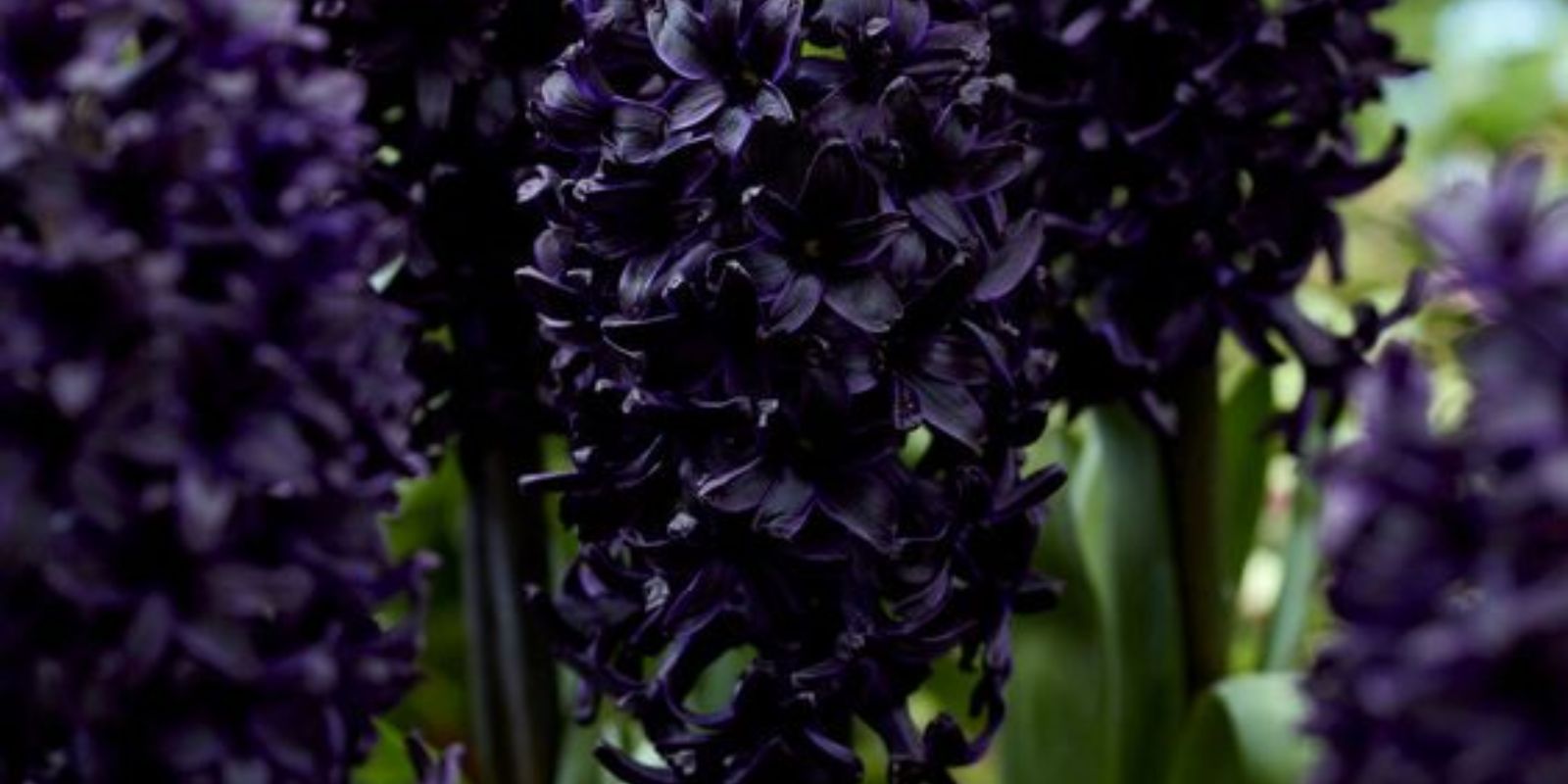Hyacinths, with their vivid blooms and delightful fragrance, are beloved in gardens around the world. Among them, the Black Hyacinth (Hyacinthus orientalis) stands out for its rare and dramatic deep color, adding an element of elegance and sophistication to any garden space. This comprehensive guide will walk you through the steps to successfully grow Black Hyacinths, ensuring you can enjoy their stunning flowers and fragrant aroma.
Introduction to Black Hyacinths
The Black Hyacinth is not truly black but rather a deep, dark purple that can appear nearly black in certain lighting. This unique color makes it a striking addition to any garden, providing a bold contrast to lighter-colored flowers and foliage. Hyacinths, in general, are known for their dense clusters of flowers on a single stem and their sweet fragrance, which can fill the air with a pleasant aroma in the spring.
Choosing the Right Bulbs
The first step in growing Black Hyacinths is selecting high-quality bulbs. Opt for firm, healthy bulbs that are free from mold, rot, or damage. The bulbs should be plump and have a smooth exterior. When purchasing, look for bulbs specifically labeled as “Black Hyacinth” or “Hyacinthus orientalis.” Choosing high-quality bulbs will increase the chances of a successful bloom.
Preparing the Soil
Hyacinths thrive in well-draining soil that is rich in organic matter. Before planting, prepare the soil by incorporating compost or well-rotted manure. This will improve soil structure and fertility. The ideal pH for hyacinths is slightly acidic to neutral, ranging from 6.0 to 7.0. Ensure that the soil is well-draining to prevent waterlogging, which can lead to bulb rot.
Planting the Bulbs
Plant Black Hyacinth bulbs in the fall, about 6 to 8 weeks before the first frost. Choose a sunny location or a spot with bright, indirect light. Here’s how to plant them:
- Depth and Spacing: Dig holes that are 4-6 inches deep and 4-6 inches apart. The pointed end of the bulb should face upward.
- Planting: Place the bulbs in the holes and cover them with soil. Firm the soil gently around the bulbs.
- Watering: Water the soil thoroughly after planting. This helps to settle the soil around the bulbs and encourages root development.
Caring for Black Hyacinths
Proper care is essential for ensuring that Black Hyacinths thrive and bloom beautifully. Here’s what you need to do:
- Watering: Keep the soil consistently moist but not waterlogged. Hyacinths prefer soil that is moist but well-drained. Overwatering can lead to bulb rot, so ensure that the soil surface dries slightly between waterings.
- Fertilization: Apply a balanced, all-purpose fertilizer in early spring as the shoots begin to emerge. Follow the manufacturer’s instructions for the correct application rate. This will provide essential nutrients to support healthy growth and blooming.
- Temperature Protection: In regions with cold winters, mulch around the plants to insulate the bulbs and protect them from freezing temperatures. In milder climates, this step may not be necessary.
Maintaining Hyacinths
To keep your Black Hyacinths healthy and blooming year after year:
- After Blooming Care: Once the flowers have faded, allow the foliage to die back naturally. The leaves are essential for photosynthesis and for storing energy in the bulbs for the next season’s growth.
- Removing Dead Foliage: After the foliage has completely yellowed and died back, you can remove it. Do not cut back the leaves while they are still green.
- Post-Blooming Fertilization: After blooming, you can apply a low-nitrogen fertilizer to help the bulbs store energy for the next season.
Dealing with Pests and Diseases
Hyacinths are generally resilient, but they can be susceptible to certain pests and diseases:
- Pests: Watch out for pests such as aphids and spider mites. If you notice any infestations, treat them with an appropriate insecticidal soap or neem oil.
- Diseases: Prevent fungal diseases by ensuring proper soil drainage and avoiding overhead watering. If you encounter issues like gray mold or root rot, improve air circulation and adjust watering practices.
Enhancing Your Garden with Black Hyacinths
Incorporate Black Hyacinths into your garden design to create striking visual effects. Their dark blooms can provide a dramatic contrast against lighter-colored flowers or foliage. Consider planting them in borders, beds, or containers for a versatile display. Combine them with other spring-blooming flowers like tulips or daffodils to create a vibrant and diverse garden.
Conclusion
Growing Black Hyacinths is a rewarding endeavor that brings an element of sophistication and unique beauty to your garden. With the right care and conditions, these plants will reward you with stunning, fragrant blooms that stand out in any landscape. Whether you’re an experienced gardener or a novice, following these steps will help ensure your Black Hyacinths thrive and add a touch of drama to your garden.
Have you ever grown Black Hyacinths or tried to cultivate other unusual flowers? Share your experiences and tips in the comments below to inspire others and join the conversation!

